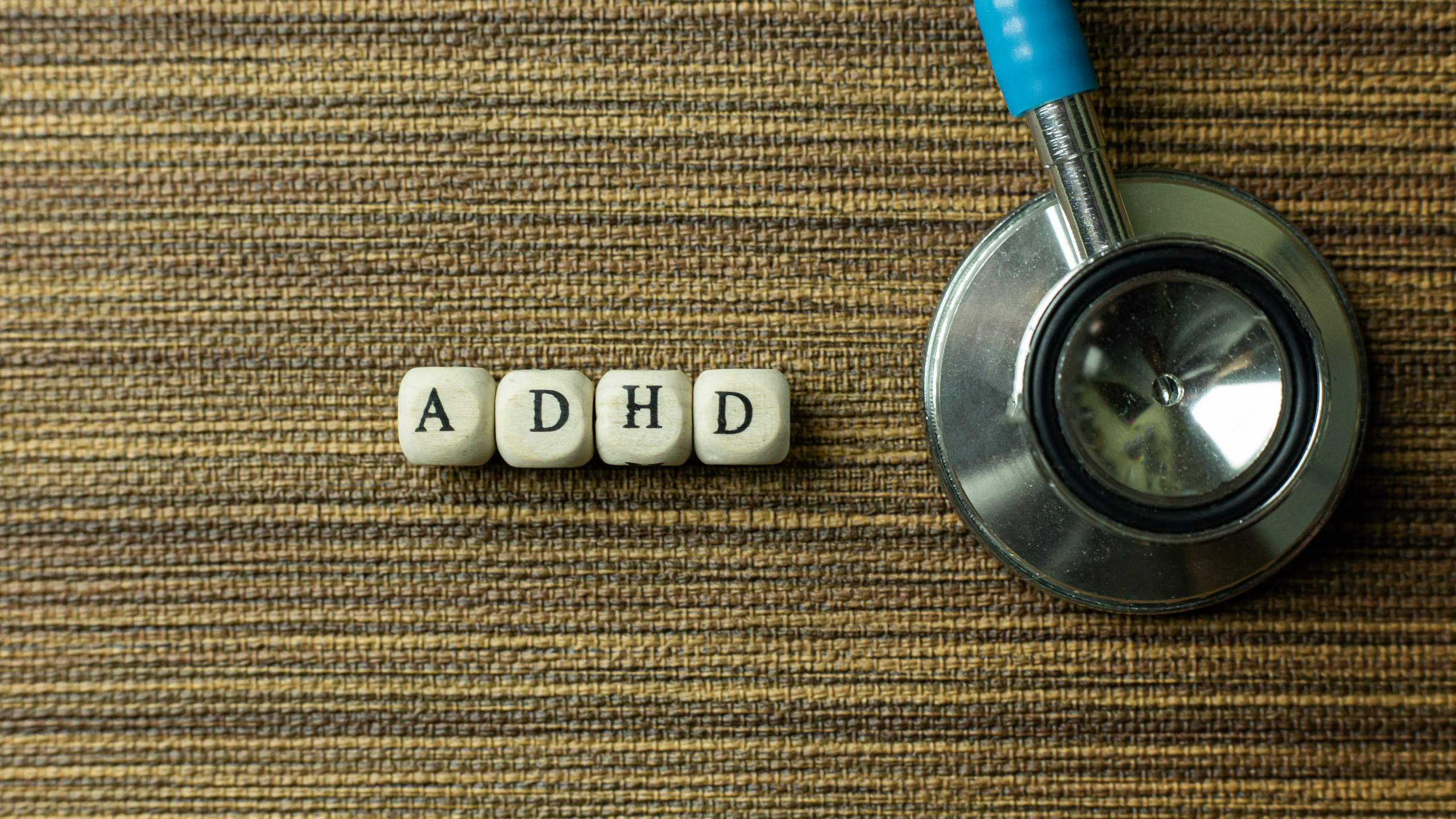Diagnosed With Adult ADHD? Your Action Plan Starts Here

Table of Contents
Understanding Your ADHD Diagnosis
Receiving an ADHD diagnosis is a starting point, not a destination. To effectively manage your ADHD, it's crucial to fully understand what it means for you. This involves reviewing your specific symptoms and establishing open communication with your healthcare provider.
Review Your Specific Symptoms
ADHD presents differently in each individual. While there are common symptoms, the specific ways they manifest vary greatly. Understanding your unique symptom profile is essential for developing an effective treatment plan.
-
Inattentive Symptoms: These might include:
- Difficulty sustaining attention in tasks or play
- Often not seeming to listen when spoken to directly
- Often doesn't follow through on instructions and fails to finish schoolwork, chores, or duties in the workplace
- Often has difficulty organizing tasks and activities
- Often avoids, dislikes, or is reluctant to engage in tasks that require sustained mental effort (such as schoolwork or homework)
- Often loses things necessary for tasks or activities (e.g., school materials, pencils, books, tools, wallets, keys, paperwork, eyeglasses)
- Is often easily distracted by extraneous stimuli
- Is often forgetful in daily activities
-
Hyperactive/Impulsive Symptoms: These might include:
- Often fidgets with hands or feet or squirms in seat
- Often leaves seat in classroom or other situations in which remaining seated is expected
- Often runs about or climbs excessively in situations in which it is inappropriate (in adolescents or adults, may be limited to subjective feelings of restlessness)
- Often has difficulty playing or engaging in leisure activities quietly
- Is often "on the go" or often acts as if "driven by a motor"
- Often talks excessively
- Often blurts out an answer before a question has been completed
- Often has difficulty waiting turn
- Often interrupts or intrudes on others (e.g., butts into conversations or games)
Discuss Your Diagnosis with Your Doctor
Open and honest communication with your doctor is vital. Don't hesitate to ask questions and clarify any uncertainties you may have regarding your diagnosis and treatment options.
-
Questions to Ask Your Doctor:
- What medication options are available for my type of ADHD?
- What are the potential side effects of each medication?
- What types of therapy are recommended for adult ADHD?
- Are there any support groups or resources available in my area?
- How often should I schedule follow-up appointments?
- What are the signs that my treatment plan needs adjusting?
-
Importance of Regular Check-ups: Regular check-ups allow your doctor to monitor your progress, adjust medication dosages if necessary, and address any emerging concerns. This ongoing dialogue is crucial for effective ADHD management.
Building Your Personalized ADHD Action Plan
Managing adult ADHD requires a proactive approach. Creating a personalized action plan involves setting realistic goals, exploring treatment options, and implementing lifestyle changes.
Setting Realistic Goals and Expectations
Breaking down overwhelming tasks into smaller, manageable steps is key to success. Avoid setting yourself up for failure by aiming for perfection. Instead, focus on progress, not perfection.
-
SMART Goals: Apply the SMART framework to your goals:
- Specific: Clearly define what you want to achieve.
- Measurable: Establish ways to track your progress.
- Achievable: Set goals that are within your reach.
- Relevant: Ensure your goals align with your overall objectives.
- Time-bound: Set deadlines for completing each step.
-
Self-Compassion: Be kind to yourself. Setbacks are inevitable; acknowledge them, learn from them, and move forward. Celebrate every small victory along the way.
Exploring Treatment Options
A multifaceted approach often works best for managing ADHD. This may include a combination of medication and therapy.
-
ADHD Medication: Common options include:
- Stimulants (e.g., methylphenidate, amphetamine)
- Non-stimulants (e.g., atomoxetine, guanfacine)
-
Therapy: Different types of therapy can be beneficial:
- Cognitive Behavioral Therapy (CBT): Helps you identify and change negative thought patterns and behaviors.
- Coaching: Provides support and guidance in developing strategies for managing daily challenges.
Implementing Lifestyle Changes
Lifestyle factors significantly impact ADHD management. Prioritizing healthy habits can make a noticeable difference.
-
Lifestyle Changes:
- Regular Exercise: Physical activity can improve focus and reduce impulsivity.
- Healthy Diet: Nourishing your body with a balanced diet supports brain function.
- Sufficient Sleep: Aim for 7-9 hours of quality sleep per night.
- Stress Management: Incorporate stress-reducing techniques like yoga or meditation.
-
Mindfulness and Meditation: These practices can enhance focus and improve emotional regulation.
Seeking Support and Building a Strong Support System
Managing ADHD is often easier with a strong support system in place. Connecting with others and educating loved ones about your condition can make a significant impact.
Joining Support Groups
Connecting with others who understand your challenges can be incredibly helpful.
-
Finding Support Groups:
- Search online for local or virtual ADHD support groups.
- Check with your doctor or therapist for recommendations.
-
Benefits of Support Groups:
- Sharing experiences and receiving peer support
- Learning coping strategies from others
- Feeling less isolated and alone
Communicating with Family and Friends
Educating your loved ones about ADHD can foster understanding and patience.
-
Communicating Your Needs:
- Clearly explain your challenges and how they impact you.
- Be patient and understanding; it may take time for them to adjust.
-
Seeking Understanding:
- Ask for patience and support as you navigate your ADHD.
- Remind them that your challenges are not a reflection of your character.
Conclusion
Receiving an adult ADHD diagnosis is a significant step, but it's not the end of the road. By understanding your diagnosis, building a personalized action plan, and seeking support, you can effectively manage your ADHD symptoms and live a fulfilling life. Remember, creating a successful action plan for your adult ADHD requires patience, persistence, and self-compassion. Take the first step today and begin building your path towards a more organized and successful future. Don't hesitate to reach out to your healthcare provider for guidance on managing your adult ADHD.

Featured Posts
-
 Cassidy Hutchinson Memoir Details Of Her Jan 6 Testimony Revealed
Apr 29, 2025
Cassidy Hutchinson Memoir Details Of Her Jan 6 Testimony Revealed
Apr 29, 2025 -
 Capital Summertime Ball 2025 Ticket Information And Purchase Options
Apr 29, 2025
Capital Summertime Ball 2025 Ticket Information And Purchase Options
Apr 29, 2025 -
 Search Intensifies For Missing British Paralympian In Las Vegas
Apr 29, 2025
Search Intensifies For Missing British Paralympian In Las Vegas
Apr 29, 2025 -
 Black Hawk Collision Near Dc Report Details Pilot Error
Apr 29, 2025
Black Hawk Collision Near Dc Report Details Pilot Error
Apr 29, 2025 -
 Trumps Transgender Athlete Ban Us Attorney General Targets Minnesota
Apr 29, 2025
Trumps Transgender Athlete Ban Us Attorney General Targets Minnesota
Apr 29, 2025
Latest Posts
-
 Je Li Blu Ajvi Nova Bijonse Analiza Njenog Nastupa Na Super Bowlu
Apr 30, 2025
Je Li Blu Ajvi Nova Bijonse Analiza Njenog Nastupa Na Super Bowlu
Apr 30, 2025 -
 See Jay Z Blue Ivy And Rumi Carters Super Bowl Appearance Exclusive Photos
Apr 30, 2025
See Jay Z Blue Ivy And Rumi Carters Super Bowl Appearance Exclusive Photos
Apr 30, 2025 -
 Super Bowl 2024 Blu Ajvi I Njena Neverovatna Slicnost Sa Bijonse
Apr 30, 2025
Super Bowl 2024 Blu Ajvi I Njena Neverovatna Slicnost Sa Bijonse
Apr 30, 2025 -
 Jay Z Blue Ivy And Rumi Carter At The Super Bowl Family Photos
Apr 30, 2025
Jay Z Blue Ivy And Rumi Carter At The Super Bowl Family Photos
Apr 30, 2025 -
 Blu Ajvi Slicnost Sa Bijonse Sokirala Publiku Na Super Bowlu
Apr 30, 2025
Blu Ajvi Slicnost Sa Bijonse Sokirala Publiku Na Super Bowlu
Apr 30, 2025
